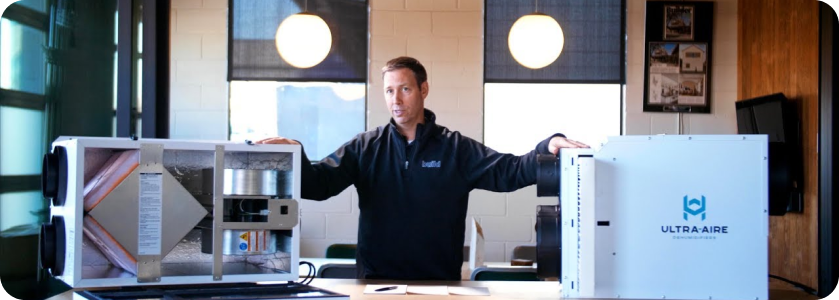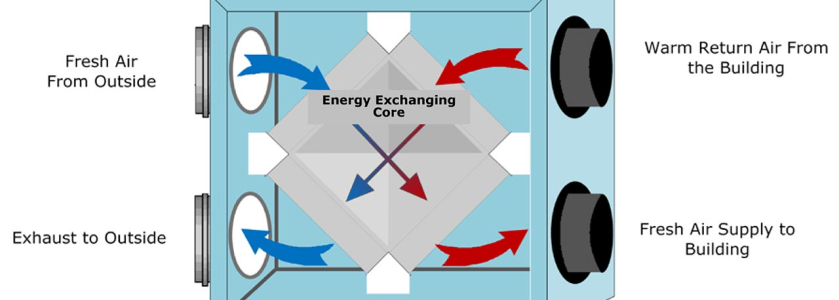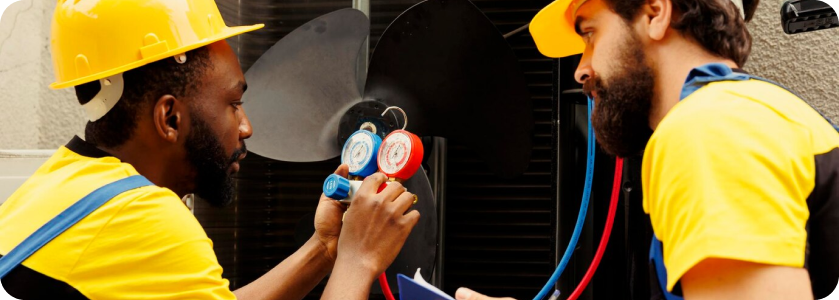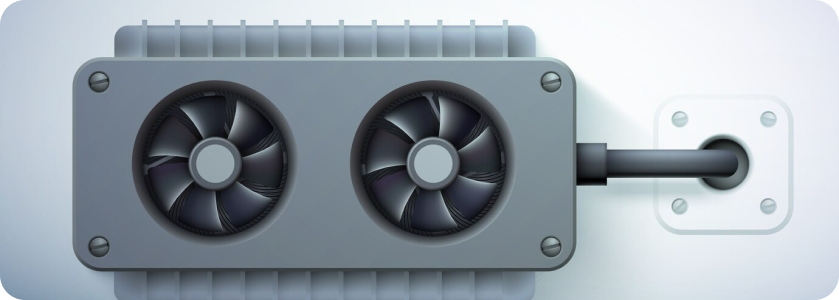ERV Vs HRV Systems:
Which Should You Choose?
Heating, ventilation, and air conditioning (HVAC) systems are essential for preserving indoor air quality and comfort in home and business settings. Energy recovery ventilation (ERV) and heat recovery ventilation systems (HRV) are viable options for energy-efficient ventilation, and deciding which one to choose often confuses a lot of people.
The choice between HRV and ERV mainly depends on the decision maker and other factors. You can choose the HRV system if you intend to only recover heated or cooled air based on the season. But you can choose the ERV system if you intend to recover both heat and excess humidity.
Why Do You Need an ERV or HRV System?
Having an ERV or HRV system in your space provides several benefits to every occupant. Some of these benefits include;
- Reduction of allergens to improve overall health
- Provides fresh oxygen
- Reduces moisture that results from daily activities
- Eliminates potentially harmful gases from various sources, including construction materials in newer homes
- Improves overall indoor safety by eliminating the need to open doors and windows

HRV and ERV Basics
HRV and ERV systems are indoor ventilation technologies that exchange stale air for mint air while recovering energy and humidity from the exchanged streams.
HRV systems provide warmth in cold climates, whereas ERV systems recover heat and moisture, making them ideal for humid climates.
Heat Recovery Ventilators (HRV) and Energy Recovery Ventilators (ERV) are critical components in modern building design for improving indoor air standards and energy efficiency.

How Do HRV and ERV Work?
The two types of ventilation transmit stale incoming air for humid air. However, HRV focuses on using new air and removing dried air.
At the same time, ERV systems recover heat energy and moisture from the outgoing air stream, making them particularly advantageous in humid climates where moisture control is critical.
HRV systems efficiently ventilate spaces by transferring heat from stale air to fresh air. They use a heat exchanger to recover heat from exhaust air, conserving energy. This reduces heating system demand during colder months and maintains a consistent indoor temperature, improving comfort for occupants.

How Do Decide Between an HRV and an ERV
HRV and ERV systems operate on the principle of exchanging stale indoor air with fresh outdoor air, but they do so with crucial differences in their mechanisms.
HRVs are ideal for cold climates where there are excess relative humidity levels. Conversely, ERVs are best in hot and humid environments, offering energy value and high moisture control

Factors To Consider When Choosing Between an HRV and an ERV
It is unnecessary to have both systems in the same space; hence, it is crucial to make a choice. However, understanding your needs amidst other considerations will help you choose the perfect ventilation system between an ERV and HRV.
Notable factors to consider when choosing between an HRV and ERV include;
- Climate
- Humidity level
- Inside air standard needs
- Family or Occupant size Budget

Why Should You Use Heat Recovery Ventilator (HRV)?
The Ventilator plays a crucial role as an air conditioner and helps air recovery. It enhances air standards by transferring heat between dried and fresh air to ensure a balanced indoor climate, higher efficiency, and minimized energy consumption.
- HRV systems are critical for the heat recovery process and maintaining a comfortable indoor temperature by effectively ventilating areas.
- This ventilation system uses a heat exchanger to transfer heat from stale exhaust air to fresh air, which saves energy and lowers heating demand.
- It also helps to keep indoor temperatures consistent, which improves occupant comfort and reduces the need for heating systems during the winter months.

Why Should You Use Energy Recovery Ventilator (ERV)?
Energy Recovery Ventilator (ERV) systems are mechanical ventilation devices. These advanced ventilation systems exchange heat and moisture between incoming and outgoing air stream channels.
They capture humidity from outgoing air and transfer it to incoming air, promoting a healthier indoor environment. This helps prevent mold growth and maintain optimal comfort levels, especially in extreme temperature and humidity variations.


